This 1st Century Roman Auxiliary Cavalryman's helm is imbued with richly embossed detailing and is crafted from 20 gauge brass. The cheek-plates are riveted to working leather hinges and the interior is blackened. Included is a basic arming cap of cotton.
The elevated status of the Roman auxiliary cavalryman is evident in the detailing upon this helmet over the more humble helms of his corresponding infantry counterpart. This reproduction is of a type related to the Auxiliary Cavalry Type A helm, of which a fine example dating to the 1st quarter of the 1st century was found near Arlon, Belgium. The dome of the helm stylistically emulates either hair or perhaps even the boar-tusk helms of ancient Mycenae – it is an artistic hearkening to Heracles and the Greek heroes of antiquity.
Although the helm appears at a glance to be very much akin to the infantry helmets, it does bear some notable and pragmatic differences that optimize it for the cavalryman. The nape, while extensive, is not as wide and encompassing as the infantry helms – this is to protect the neck of the man from injury should he be dismounted. The Roman did not yet have the transformative stability benefits of stirrups and thus was more likely to be dismounted in a melee. He relied heavily upon on a good saddle, strong thighs and horsemanship to keep him upon his mount in battle and border skirmish.
Additionally, protection is provided for the ear on cheek-plates, whereas the infantry helms had open ears to ensure they heard the sharp commands of the Centurion instead of feeling the sting of his disciplinary vine stick. This example of the cavalryman's helm even has stylized ears embossed upon the cheek-plates.

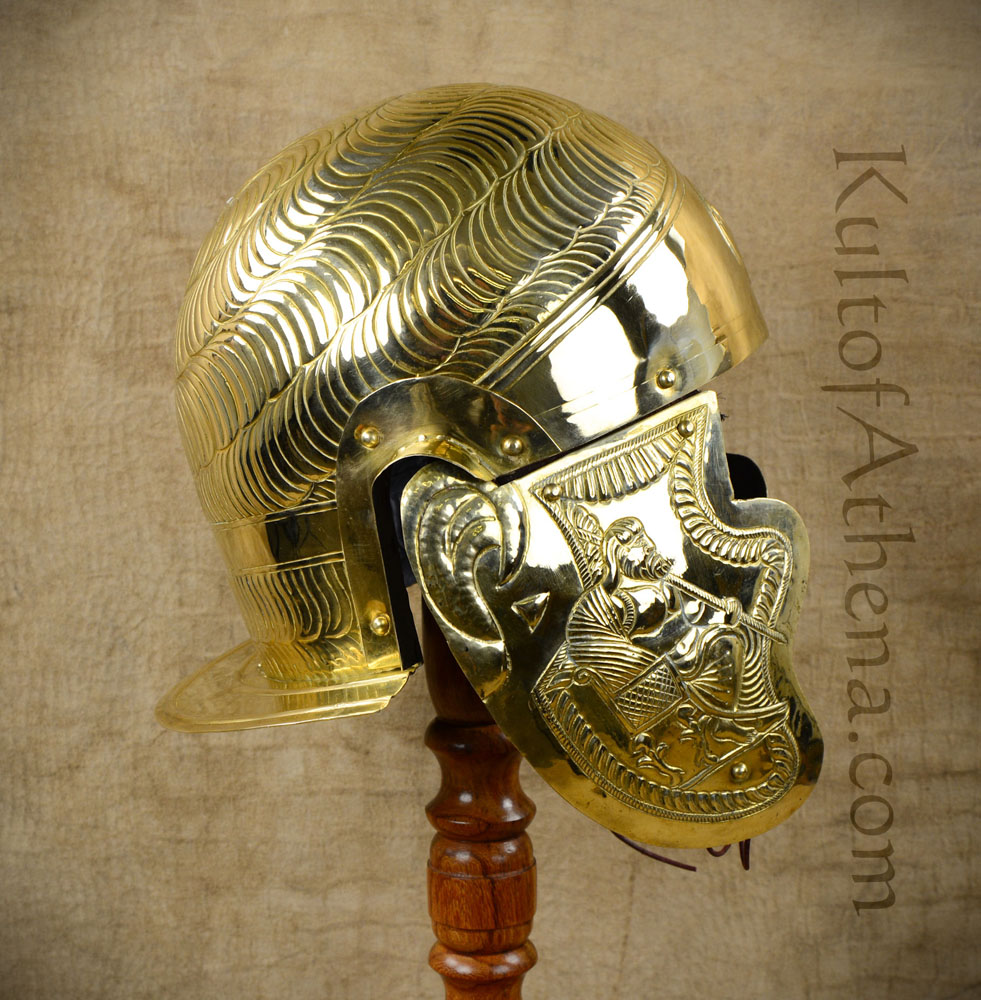
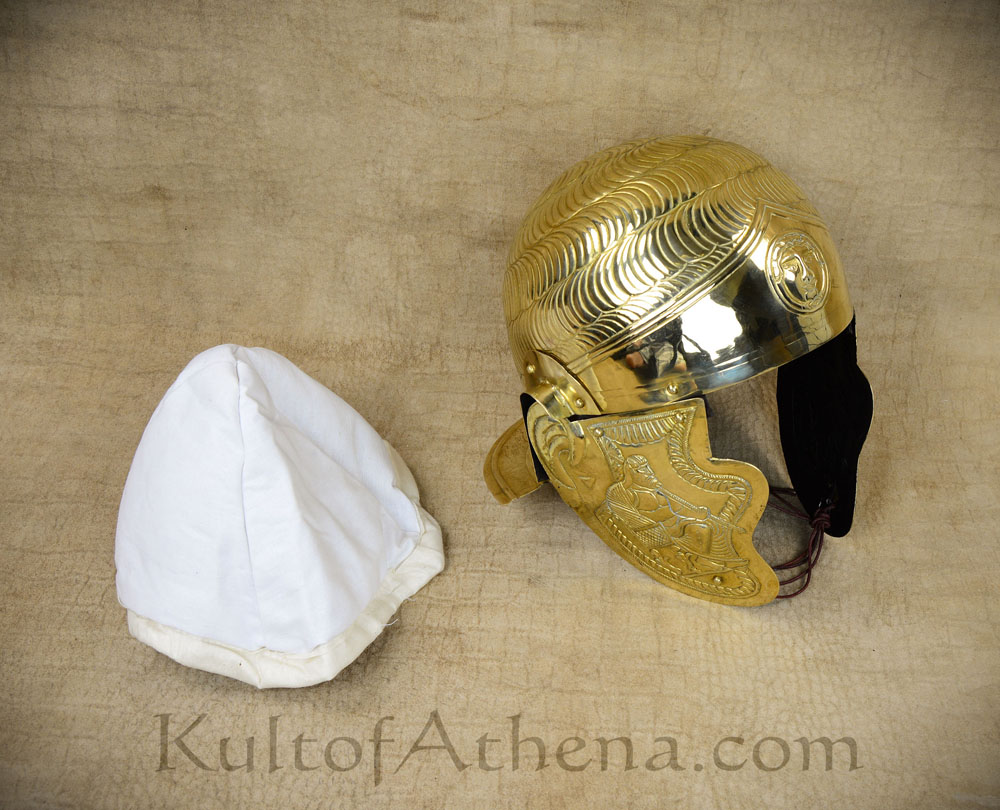

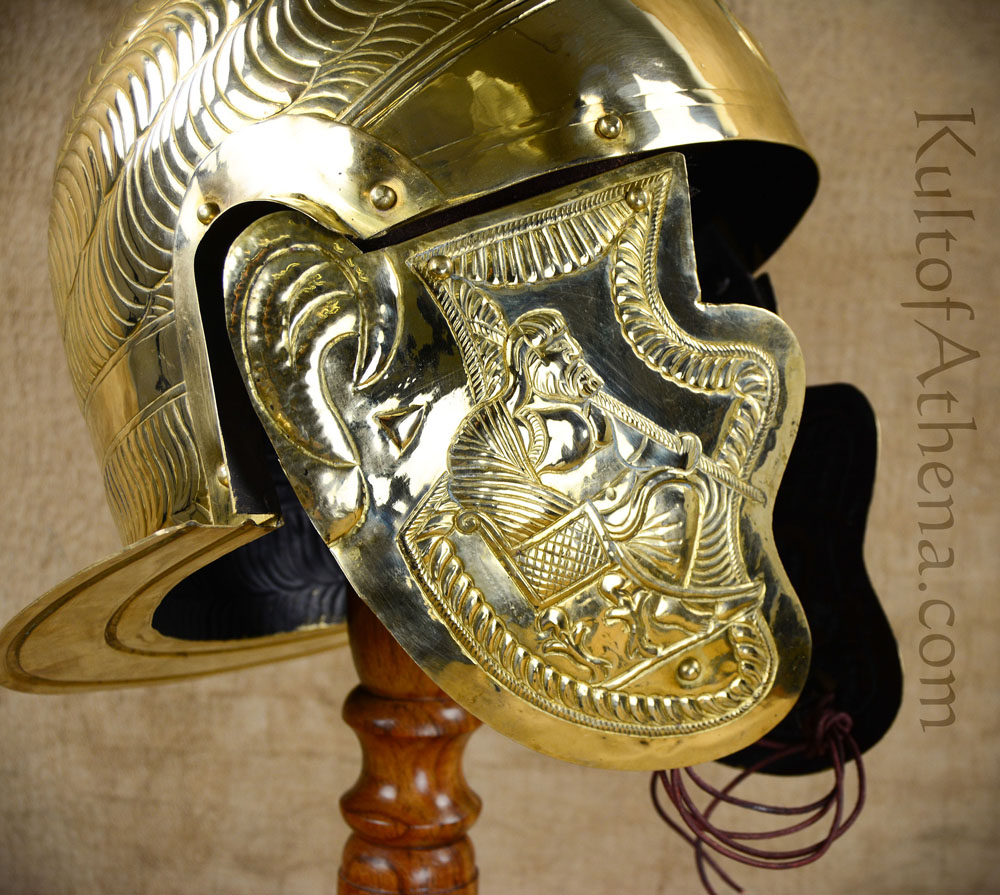
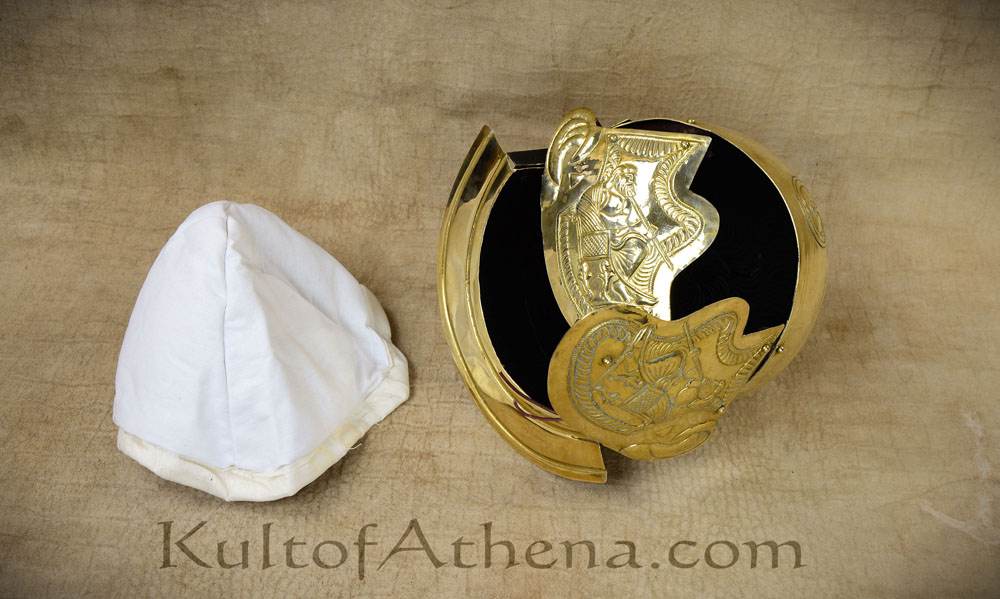
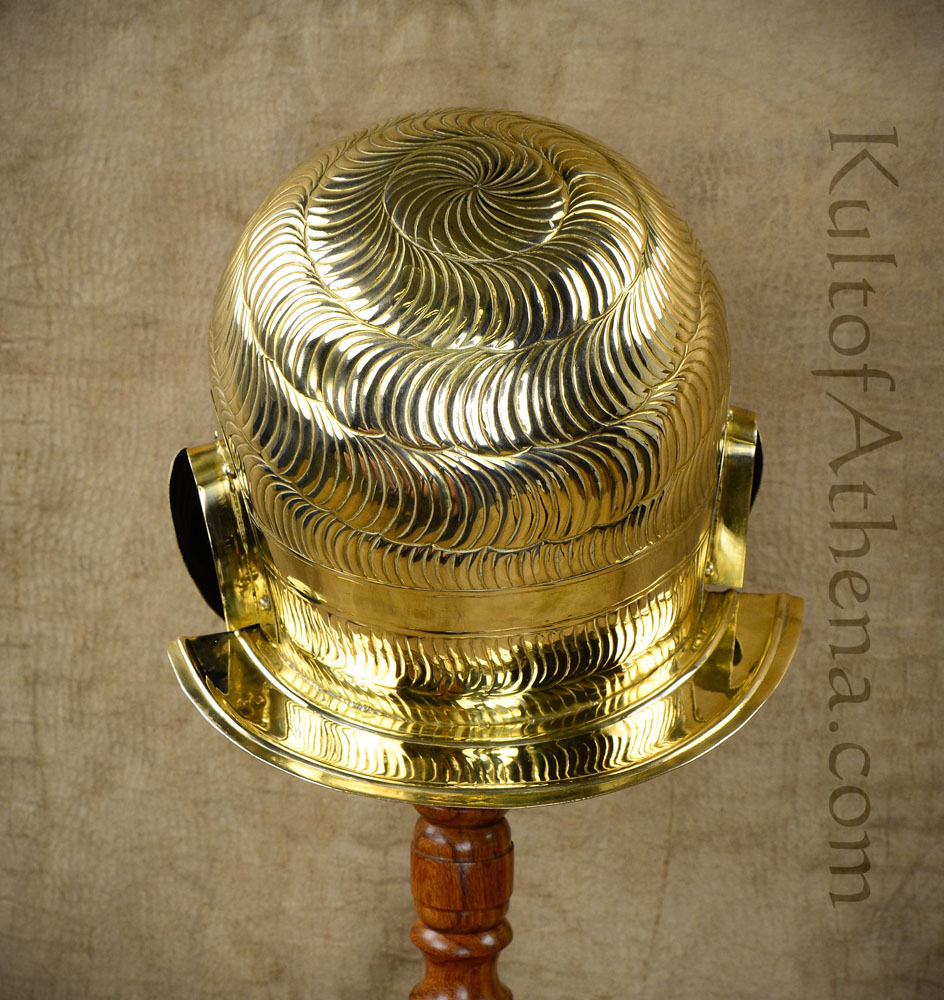
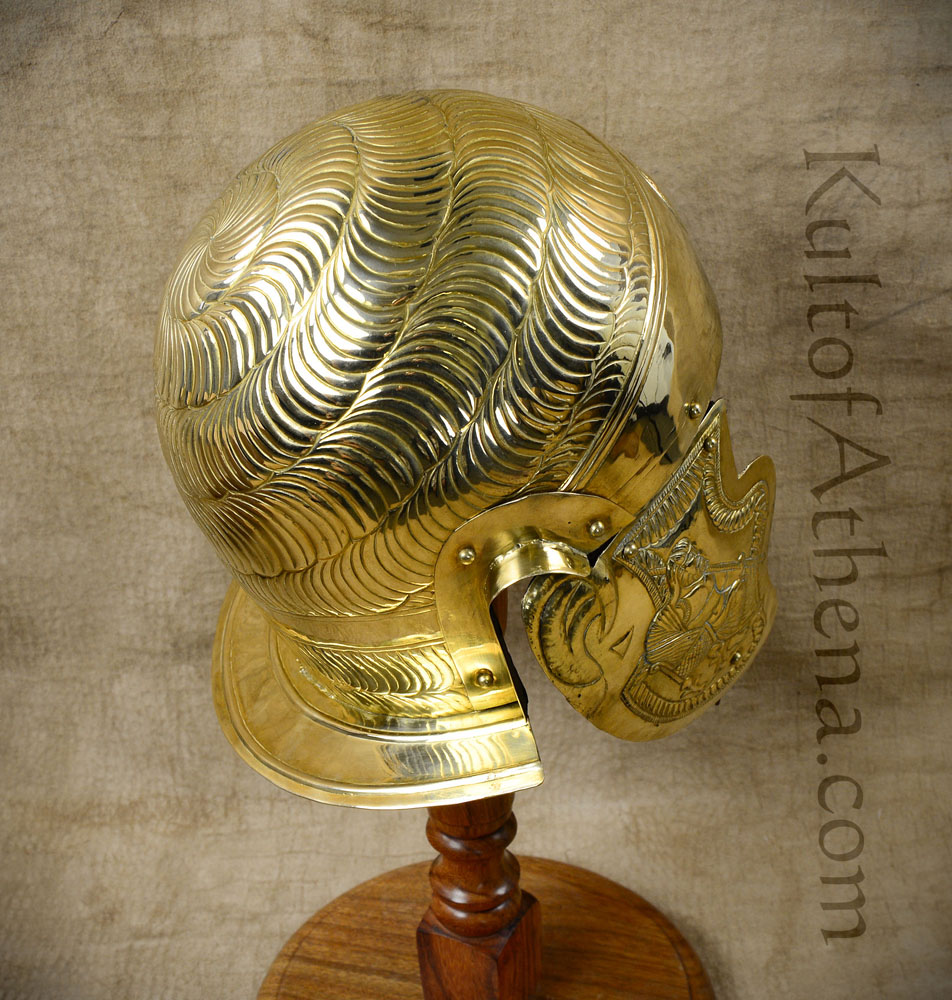

Reviews
There are no reviews yet.